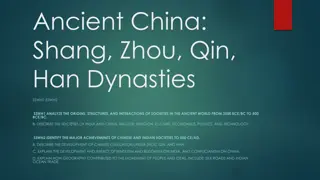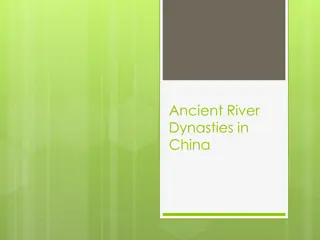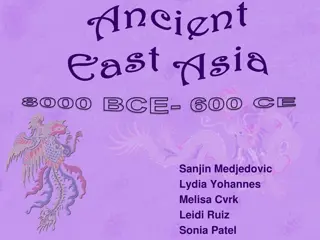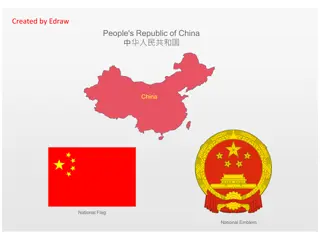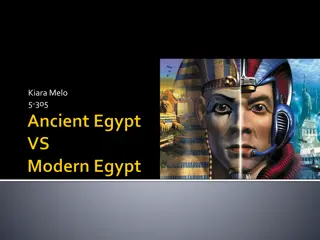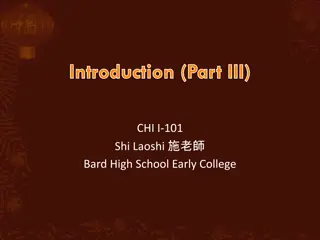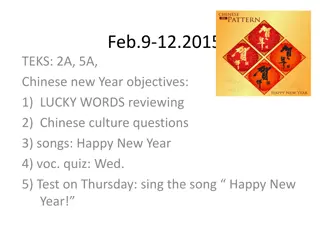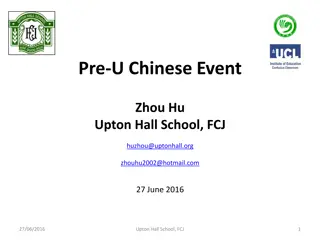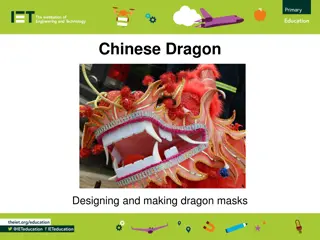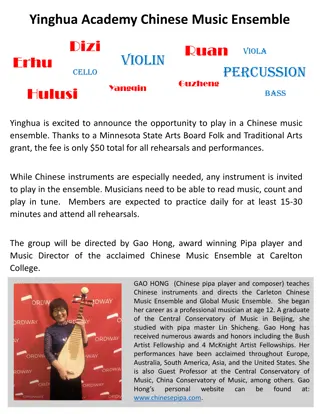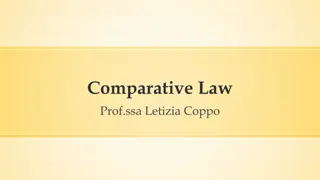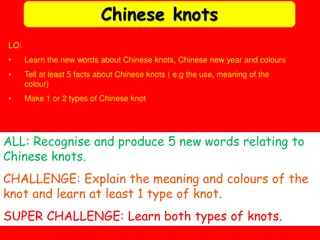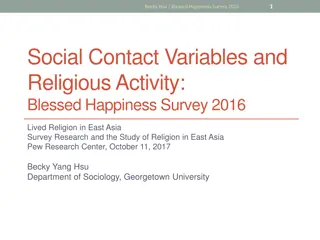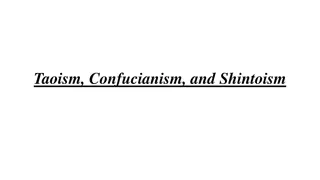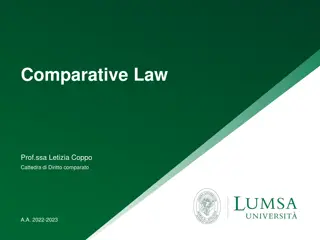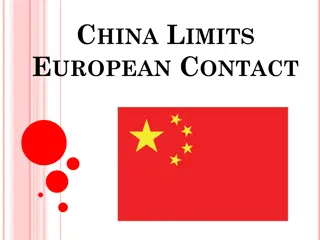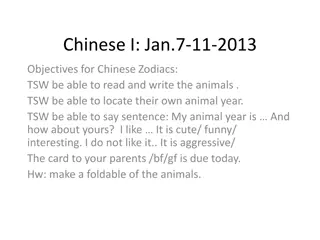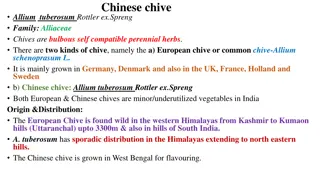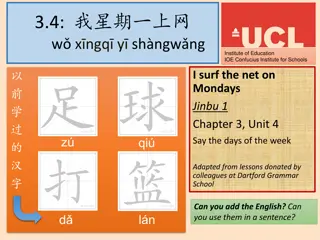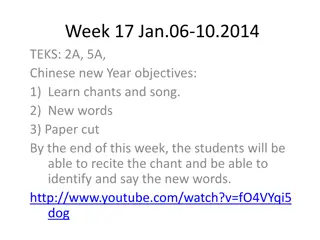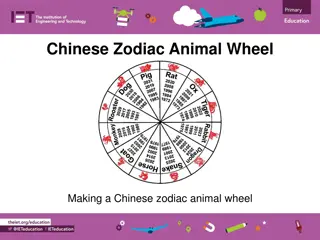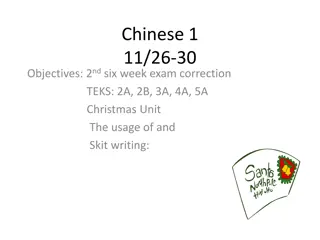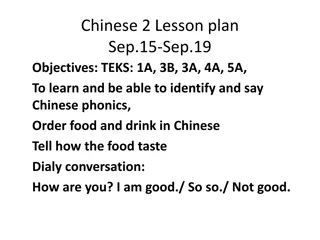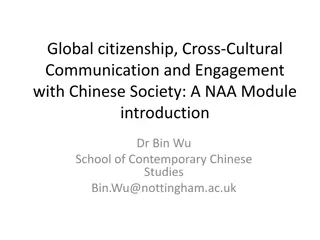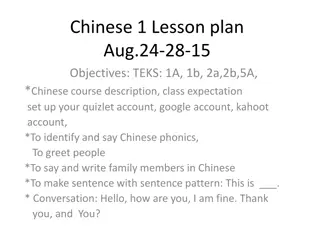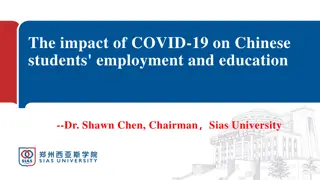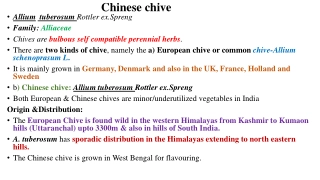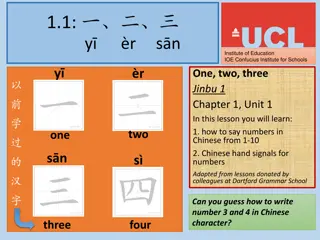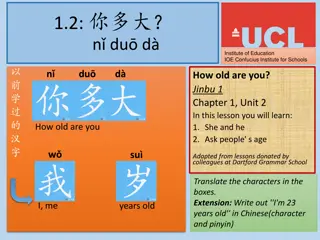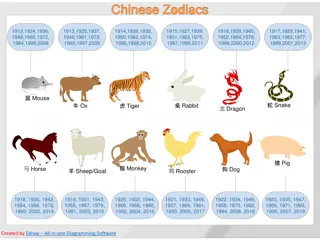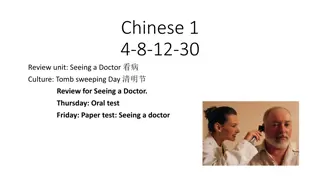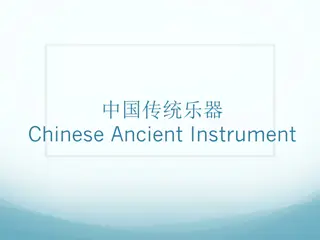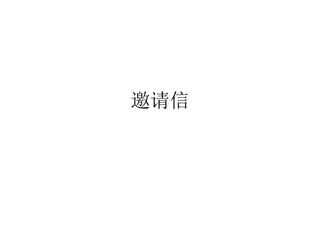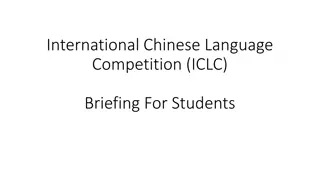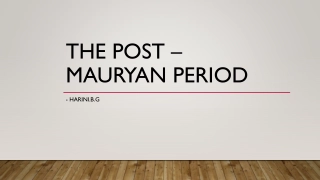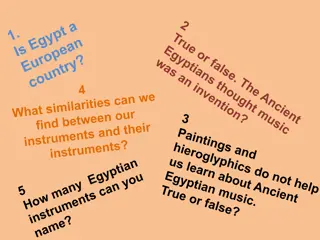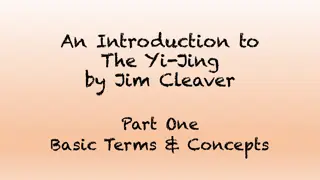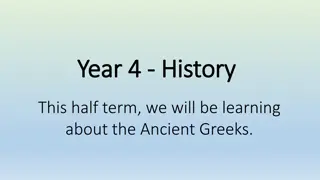Ancient Chinese Dynasties and Social Structures
The Shang and Zhou dynasties in ancient China were characterized by the rule of kings who held political, religious, and military power. The Shang rulers expanded their territories with the help of warlords and aristocrats, while the Zhou dynasty instituted hereditary aristocratic rule. Chinese society comprised aristocrats, farmers, and other classes, with a strong belief in ancestral worship, the Mandate of Heaven, and a bureaucratic government system. The development of early Chinese writing and the transition of power from the Shang to the Zhou are key historical events of this period.
Download Presentation

Please find below an Image/Link to download the presentation.
The content on the website is provided AS IS for your information and personal use only. It may not be sold, licensed, or shared on other websites without obtaining consent from the author. Download presentation by click this link. If you encounter any issues during the download, it is possible that the publisher has removed the file from their server.
E N D
Presentation Transcript
The king was the political, religious, and military leader of Shang China. Over time, the Shang conquered nearby areas. Kings began to rule more land and people. Warlords helped the Shang kings control territories throughout the country. A warlord military leader who has his own army. warlord is a
Warlords and other royal officials were aristocrats. Aristocrats are people in an upper class of society. Their wealth comes from the land they own. Most Chinese people, however, were farmers. They farmed the land owned by aristocrats. A small number were merchants, artisans, and enslaved people.
People in Shang China: worshiped many gods believed the gods could bring good or bad fortune honored their ancestors, or long-dead family members. believed their ancestors would bring them good luck made offerings to the gods and their ancestors
Early Chinese writing used pictographs and ideographs. Pictographs are characters that represent objects. Ideographs are another kind of character. They link two or more pictographs to express an idea.
. According to legend, the last Shang ruler was a wicked tyrant. Rebels overthrew the Shang government and declared a new dynasty called the Zhou. The Zhou ruled China for more than 800 years. The king led the government. He was helped by a bureaucracy. A selected officials who do different government jobs. bureaucracy. A bureaucracy is a group of
Under Zhou rulers, China grew larger. The king divided the country into territories. Each territory was ruled by an aristocrat. When an aristocrat died, his son or another member of his family governed the territory. This means these positions were hereditary. hereditary.
Zhou kings believed that the gods gave them the right to rule to China. This idea is known as the Mandate of Heaven The Mandate said that the king must rule by the proper "Way," known as the Dao. The king's duty was to honor and please the gods. Mandate of Heaven.
Chinese system of beliefs that describes the way a king must rule.
Confucius was born about 550 B.C. to a farming family. He lived during a time when kings were often fighting each other. Confucius believed people should follow the beliefs of their ancestors. He also taught that everyone had a duty. Rulers had a duty to lead their people wisely. Children had a duty to respect their parents. Parents had a duty to love their children. Confucius believed that if everyone did their duty and followed traditional beliefs, there would be peace. He also believed that all men should be able to serve in the government. This led to a system of examinations to choose government officials. Confucius was honored as a great teacher. After his death, his teachings, called Confucianism, spread across China. Confucianism, spread across
Like Confucianism, Daoism aimed to create a peaceful with the ideas of Laozi. Confucius thought people should work hard to make the world better. Daoism taught people to turn away from society and live in harmony with nature. Dao means "the Way." Laozi and his followers believed Daoism was the way, or path, to a better life. Many Chinese followed both Confucianism and Daoism. Daoism aimed to create a peaceful society. It began
Hanfeizi introduced the ideas of legalism during the Unlike Confucious and Laozi, he believed that humans are naturally evil. He thought only strict laws and harsh punishment would get people to do what they should do. Many aristocrats supported legalism because it emphasized force. Under legalism, rulers did not have to think of the needs or wishes of their people. The ideas led to harsh punishments for even small crimes legalism during the 200s B.C.
Chinese society was made up of four social classes. A social class a society with the same economic and social position. Aristocrats-wealthy Farmers- most people-served as soldiers Artisans- skilled workers who made useful objects Merchants- provided goods and services to aristocrats social class is a group of people in
The family was at the center of Chinese society. Chinese families practiced filial piety. Filial piety is the to respect, obey, and take care of their parents. Men and women had very different roles in early China. Men grew crops, ran the government, and fought wars. Women raised children and saw to their education. They also managed the household and family finances. Filial piety is the responsibility children have
In 221 B.C. the ruler of the Chinese state of Qin took control of China and ended the Zhou dynasty. The new ruler called himself Qin Shihuangdi, which means the First Qin Emperor. Qin brought many changes to China. Qin wanted to unify China. He took control of China s provinces. Before then, the provinces were ruled by aristocrats. The aristocrats passed control to their sons when they died. Instead, Qin now appointed the governors. Qin s rule was harsh. Anyone who disagreed with him was punished or killed. He burned writings that did not agree with him. He appointed censors government officials did their work. censors to make sure When Qin died in 210 B.C., aristocrats and farmers revolted. By 206 B.C., the Qin dynasty was over.
In 202 B.C. a new dynasty in China called the Han dynasty came to power. The Han dynasty would rule China for over 400 years. The first strong Han emperor was Han Wudi. Han Wudi ruled from 141 B.C. to 87 B.C. He wanted dedicated and talented people to work in the government. He created schools to prepare students for civil service jobs, or government jobs given to people based on their scores on tests. Civil service tests were a way of choosing educated government workers. The tests for the Chinese civil service were very difficult. Some students who passed got jobs as teachers. Others worked for the government. They won great respect because they were well-educated. Han dynasty civil service jobs, or
During the Han dynasty, many farmers became tenant farmers. A tenant farmer works land that belongs to Most tenant farmers were very poor. tenant farmer works land that belongs to someone else. As the population grew, the Han empire took in new areas. Han armies conquered lands to the north, including Korea, and moved south into Southeast Asia. They went west as far as India. The Chinese lived peacefully for nearly 150 years.


